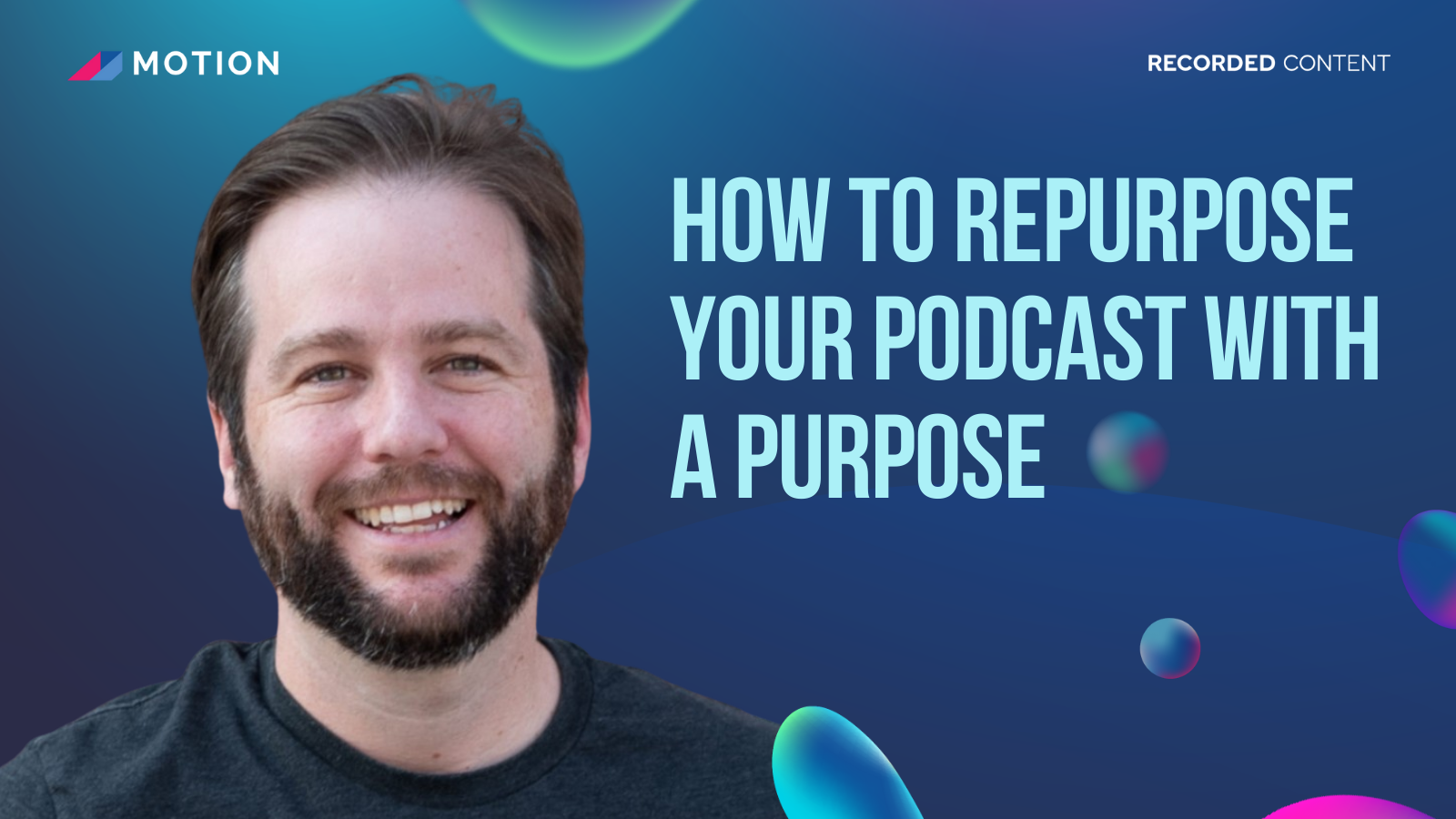Episode Summary
Content creation is an important brand strategy, and a critical ingredient for building a strong and reputable brand.
But all your content needs to be well-coordinated; you have to create a unified brand voice and a unified experience for your audience.
In this episode of the Recorded Content podcast, our host Tristan Pelligrino welcomes Jeff Coyle, the Co-Founder and Chief Strategy Officer of MarketMuse. They discuss the importance of a unified brand voice, how to create a unified team, and the benefits of repurposing your content.
Featured Co-Founder

- Name: Jeff Coyle
- What he does: He's the Co-Founder and Chief Strategy Officer of MarketMuse.
- Company: MarketMuse
- Noteworthy: Jeff is a data-driven inbound marketing executive with 20+ years of experience managing products and website networks, and he is focused on helping companies grow.
Key Insights
- Create a unified voice with your content. When new users come across your website, you want them to have a great and enjoyable experience. Creating a unified brand voice can help with that. Jeff explains, "Product content is often separated from SEO content, editorial content, and PR content. That disconnect is still a massive internal problem where people feel like those different types of content deserve different KPIs or deserve something that kind of creates or amplifies the silos from which they are formed. [...] Imagine if your prospect comes to your site and they read one article that was written by editorial, one written by product, one written by SEO. First of all, what are the odds that they’re going to have a unified voice? What are the odds they’re going to have a great unified experience?"
- Put your best foot forward. High-quality content is in everyone's best interest, and a unified voice is the best way to achieve that. Jeff explains, "It's in our best interest to put our best foot forward with our content. It's almost impossible to believe that with that type of setup, that there's an executive team or somebody with meaningful responsibility in an organization that is going to go, 'Yeah, I'm cool with low-quality content. I'm cool with content that doesn't do what we want it to do as an organization.' I don't think that passes muster today. So I think when you expose that, or you give examples internally of user experiences that are sub-par or that aren't unified, that's when people start to get it."
- Content updates are not the same as content upgrades. Jeff talks about content repurposing. He explains the difference between content updates and content upgrades. "You need to go back and update content through data-driven reasoning. You have to go back and update content if it's out of date, if it's not current with today's intent, if it wasn't very good in the first place, or if it's not as good as or better than what's representative of competitors — whether it's a publisher or direct competitors. You've got to have an update."

“Repurposing is one of the hardest things that looks really easy.”
Jeff Coyle
Co-Founder & Chief Strategy Officer
MarketMuse
Episode Highlights
How to create a unified team
“The best unifying factor I think is to tell people, ‘All our content already works together, we’re not matching the intent of our customers, and we’ve got huge gaps.’ What happens if someone comes to our site? They land on our beginner’s guide to X. But they’re experts. What should they do? We don’t have that content item for them. […] What if I have that content? It’s just not linked because it’s from SEO or because it’s from some other team. So all of those things just roll downhill to exhibit problems.”
Repurposing looks easy, but it’s hard
“Repurposing is one of the hardest things that looks really easy. It’s really hard to stay disciplined about it — to always do at least a certain amount. It feels like it’s work that you’re doing to check boxes; you’ve got to stay really disciplined about it. The easiest example is transcription, but then you can build from that. And this is where a content strategist who’s very well-versed in repurposing needs two things: one, the freedom to be creative and then to meet the minimum that you apply to the content of a particular type.”
Unifying metrics to determine if you have a unified voice
“One of the things, Pam Didner — she’s a sales enablement guru — so I’m kind of taking this from her because it’s relevant to say, ‘Does your marketing funnel match your sales funnel?’ I’m like, ‘What?’ Does the way that you measure leads going into customers and then post-sale — does that match the way that the sales team believes that they will take a user from first touch to closing the deal? And if it doesn’t, that’s an exhibition of there being a major gap.”
How to get the most out of your repurposed content
“I’ve seen it fail so much. Repurposing is slightly painful — this is my conclusion. Totally speculative, it’s through my experience, and it’s summarizing, but it’s because it is painful. It feels like it’s not going to be; it feels like it’s kind of cheap. It feels like it’s not as good as the original. And so people will do it, but they’re not really behind it. They’re not really tuned into how valuable it could be. So that’s been my experience, and creating that SOP just requires that we knock it out. It requires me to think creatively about how to get the most out of my investment.”
